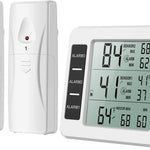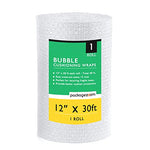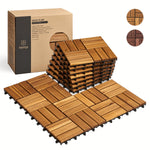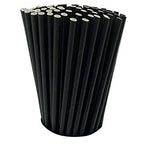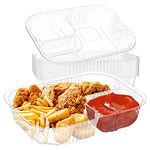You have no items in your shopping cart.
Streamlining Waste Management with the Trash Compactor
Do you find yourself constantly battling overflowing garbage bins and the hassle of frequent waste disposal? If so, it's time to consider the revolutionary solution of a trash compactor. A trash compactor is an innovative device designed to compress and reduce the volume of waste, making it an essential tool for efficient waste management.
In this comprehensive guide, we will delve into the world of trash compactors, exploring their benefits, various types, maintenance tips, and more. By the end, you'll have a solid understanding of how a trash compactor can transform your waste disposal process, making it more convenient, environmentally friendly, and cost-effective.
Benefits of Using a Trash Compactor
Trash compactors offer numerous advantages for both residential and commercial settings. Let's explore the key benefits that make this waste management solution indispensable:
1. Efficient Waste Compression
Trash compactors excel at compressing waste, reducing its volume by up to 80%. By minimizing the space occupied by garbage, you can significantly reduce the frequency of waste collection, saving time and resources.
2. Enhanced Hygiene and Aesthetics
Overflowing trash bins not only create an unsightly mess but also attract pests and emit unpleasant odors. With a trash compactor, you can maintain a clean and aesthetically pleasing environment by effectively containing waste within a compacted unit.
3. Reduced Environmental Impact
The environmental impact of waste disposal is a growing concern. By compacting waste, you decrease the number of plastic bags used and minimize the carbon emissions associated with waste transportation. Choosing a trash compactor aligns with eco-friendly practices and contributes to a greener future.
4. Cost Savings
Frequent waste collection services can be expensive, especially for businesses producing large volumes of trash. A trash compactor allows you to reduce the frequency of waste pickups, leading to substantial cost savings in the long run.
Types of Trash Compactors
Trash compactors come in various types, each catering to different needs and settings. Let's explore the common types available in the market:
1. Residential Trash Compactors
Residential trash compactors are compact units designed for use in homes and apartments. They are typically installed in the kitchen or garage, offering a convenient way to manage household waste.
2. Commercial Trash Compactors
Commercial trash compactors are heavy-duty units designed for businesses and commercial establishments. These robust machines can handle large volumes of waste and are commonly found in restaurants, shopping malls, hotels, and manufacturing facilities.
3. Stationary Trash Compactors
Stationary trash compactors are fixed in a specific location and are ideal for settings that generate consistent amounts of waste. They are commonly used in industrial facilities, retail centers, and large residential complexes.
4. Self-Contained Trash Compactors
Self-contained trash compactors combine the compactor and waste container into a single unit. These compactors are sealed and watertight, making them suitable for wet waste such as food scraps or liquids. They are commonly used in restaurants, hospitals, and supermarkets.
5. Vertical Trash Compactors
Vertical trash compactors are designed to be space-efficient, making them suitable for areas with limited floor space. These compactors compress waste vertically, allowing you to maximize the use of available space.
6. Mobile Trash Compactors
Mobile trash compactors are equipped with wheels, making them easy to move around as needed. They are particularly useful in settings where waste generation occurs in different areas, such as construction sites or outdoor events.
Maintaining Your Trash Compactor for Optimal Performance
Proper maintenance of your trash compactor ensures its longevity and optimal performance. Follow these maintenance tips to keep your unit running smoothly:
1. Regular Cleaning and Sanitization
To prevent odors and bacterial growth, it's essential to clean and sanitize your trash compactor regularly. Use a mild detergent and warm water to wipe down the interior and exterior surfaces. Ensure the unit is thoroughly dry before usage.
2. Proper Disposal of Waste
Avoid disposing of hazardous materials or objects that may damage the compactor, such as glass shards or sharp metal. Additionally, refrain from overloading the unit, as it may strain the compactor's components and hinder its functionality.
3. Lubrication of Moving Parts
Periodically lubricate the moving parts of your trash compactor to ensure smooth operation. Consult the manufacturer's guidelines for suitable lubricants and recommended intervals for lubrication.
4. Inspection of Seals and Gaskets
Regularly inspect the seals and gaskets of your trash compactor for signs of wear or damage. Faulty seals can lead to odors and reduced compaction efficiency. Replace any damaged seals promptly to maintain optimal performance.
5. Professional Maintenance Service
Consider scheduling professional maintenance service at regular intervals to identify and address any underlying issues. Professional technicians can inspect the compactor thoroughly, perform necessary repairs, and optimize its performance.
FAQs about Trash Compactors
1. What safety precautions should I take when using a trash compactor?
When operating a trash compactor, it's crucial to follow safety guidelines to prevent accidents. Always keep hands and loose clothing clear of the compactor's opening and avoid placing flammable or hazardous materials in the unit.
2. Can a trash compactor handle different types of waste?
Trash compactors can handle a wide range of waste materials, including food waste, packaging, cardboard, and more. However, certain materials, such as liquids or hazardous substances, may not be suitable for compaction. Refer to the manufacturer's guidelines for specific waste limitations.
3. How often should I empty a trash compactor?
The frequency of emptying your trash compactor depends on the volume of waste generated and the compactor's capacity. Generally, compactors can operate for several weeks before requiring emptying. However, it's advisable to empty the unit promptly when nearing its maximum capacity to maintain optimal compaction efficiency.
4. Can a trash compactor reduce waste odors?
Yes, a trash compactor can help minimize waste odors by securely containing the waste within the compacted unit. Additionally, regular cleaning and sanitization of the compactor contribute to odor control.
5. Are there any special requirements for trash compactor installation?
Trash compactor installation requirements vary based on the type and model. Residential units typically require a dedicated power outlet and proper ventilation. Commercial or industrial units may require professional installation to ensure proper integration with existing waste management systems. Refer to the manufacturer's guidelines for specific installation instructions.
6. Can a trash compactor contribute to sustainable waste management?
Absolutely! By reducing waste volume, minimizing plastic bag usage, and optimizing waste collection frequency, a trash compactor contributes to sustainable waste management practices. It helps conserve resources, reduces landfill space, and lowers carbon emissions associated with waste transportation.
Conclusion
The trash compactor presents an effective solution to streamline waste management and revolutionize the way we handle trash. With its numerous benefits, including efficient waste compression, enhanced hygiene, reduced environmental impact, and cost savings, a trash compactor is a must-have tool for both residential and commercial settings.
By choosing the right type of compactor, following proper maintenance practices, and adhering to safety guidelines, you can optimize the performance of your trash compactor and enjoy its long-term benefits.
Make waste disposal a breeze and contribute to a greener future by embracing the power of the trash compactor today!


